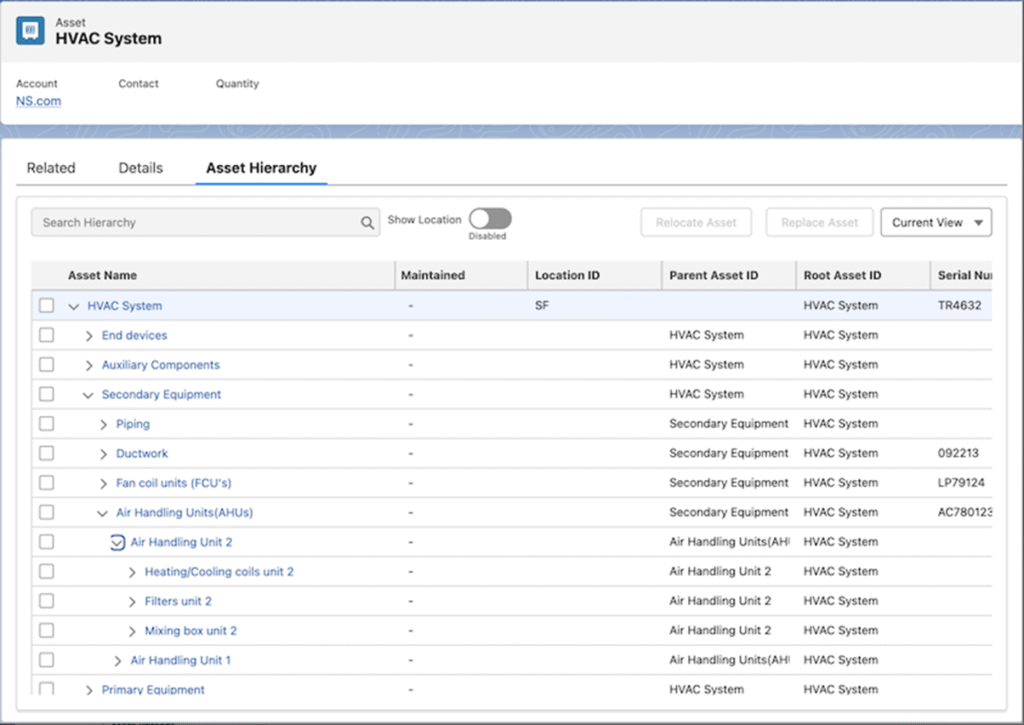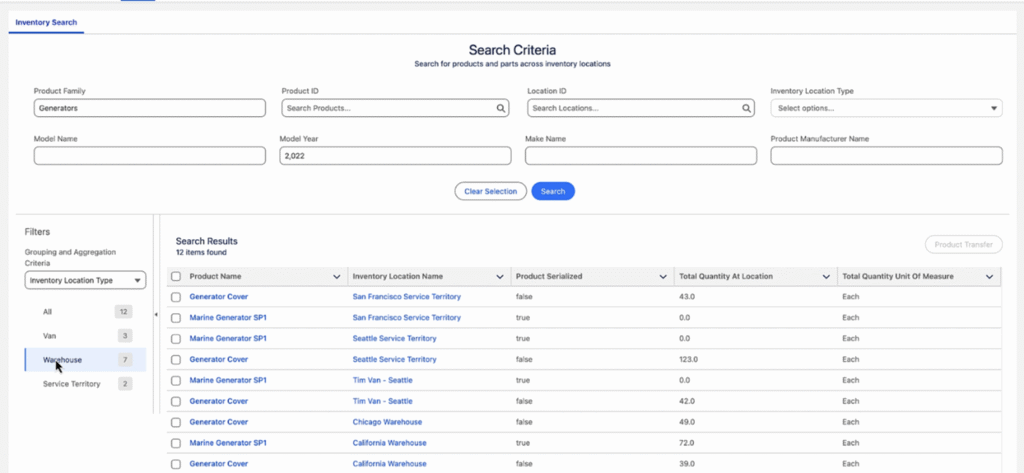What is Asset Service Lifecycle Management and why is it important?
Asset Service Lifecycle Management refers to the management of an asset throughout its entire lifecycle: from installation and use to maintenance and eventual replacement or disposal. By using tools within Salesforce, every part of that lifecycle becomes more manageable and valuable.
What does Asset Service Lifecycle Management entail?
The Asset Service Lifecycle Management tool comprises twelve distinct functionalities that can add value to your Field Service organisation. The functionalities are divided into four different categories: Asset Information, Inventory Management, Service Parts, and Work Orders. These are explained in more detail below:
Asset Information
Asset Service Lifecycle Management provides two functionalities that help create better insight into the organisation’s assets. The Asset Interactive Hierarchy provides a clear overview of the current assets and their associated locations. From this functionality, you can clearly indicate if an asset has been replaced or moved.

You can use the Asset Coverage View to see customers’ service rights, such as service contracts or product warranties.
Inventory Management
Asset Service Lifecycle Management offers three functionalities that add value to Inventory Management. With Inventory Search and Transfer, you can search for specific products using an extensive list of criteria. From the same screen, the products can be moved to other storage locations. This applies to both serialised and non-serialized products.

With Inventory Count, you can create special tasks to perform a product count at a storage location, ensuring that quantities in Salesforce remain accurate. You can use Inventory Replenishment to set up an automatic process for restocking products, for example, when the inventory reaches a minimum level.
Service Parts
Several functionalities are also available for managing Service Parts. Advanced Exchange can improve the process of return and replacement requests. Through Service Parts Return, field technicians can create return requests via the Field Service Mobile App. With Depot Repair, you can create orders to repair damaged parts once they arrive at storage locations. Use the Product Service Campaign to create large-scale orders of the same type, such as recalling a product or upgrading the same product at different locations.
Work Orders
The last three functionalities contribute to optimising Work Orders. With Work Order Estimation, you can create a quote for a work order, based on the type of work, used products, and possible service rights. If the customer accepts the quote, a Work Order is then created. The Book Service Appointment functionality already exists on the record feed of a Work Order, but through Asset Service Lifecycle Management, you can now add the functionality to multiple processes, including the Work Order estimation process. This allows you to schedule a Service Appointment immediately without navigating to another page in Salesforce. The final functionality is Timesheets and Labor Cost Optimization, which makes it easier for field service technicians to fill out timesheets and for managers to approve timesheets on a larger scale. The functionality also helps comply with labour laws and union rules.
The benefits for business operations and end users
Using these tools as a Field Service organisation leads to more efficient planning, less downtime, and a longer lifespan of business-critical assets. More specifically, the benefits can be divided into benefits for business operations and benefits for end users.
Benefits for business operations
For business operations, using the tools leads to more efficient work preparation and planning, better visibility of asset coverage and warranties, optimised return management and service campaigns, and improved collaboration between teams.
Benefits for end users
For end users, it leads to faster and more transparent service, fewer errors and delays, and more insight into their assets and rights. This improves the user experience for field service technicians, planners, managers, and customers of your field service organisation.








